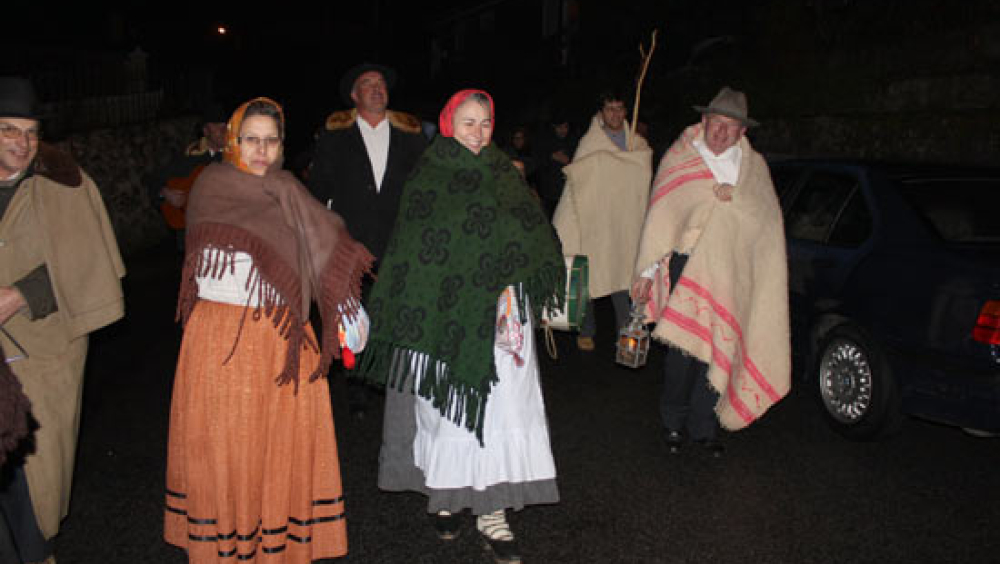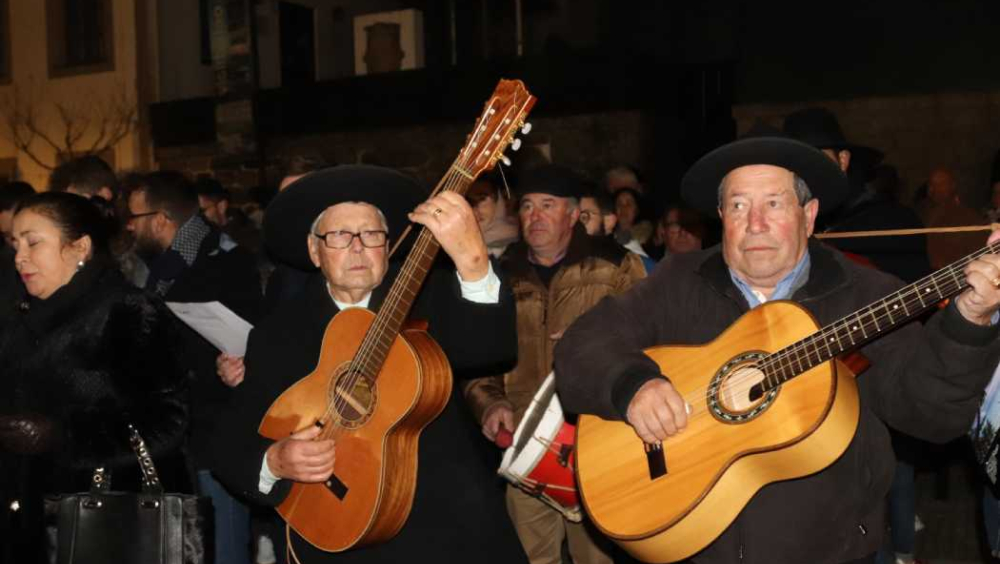Cantar os Reis (To sing with the Magi)
Just as the Magi followed the guiding star to the stable where the baby Jesus was born, and the hermit Pelagius followed the stars that pointed him to the tomb of Santiago the Apostle, pilgrims always continued to follow the stars on their pilgrimage. This parallelism between the sacred and the profane, the spiritual and the rational, remains alive in a Portuguese tradition, the “Cantares de Reis”.
Around Twelfth Night, «Noite de Reis» (January 6), groups of people dressed in traditional and modest clothes brave the cold of the night to “pilgrimage” from house to house, singing popular songs, of a religious nature, and asking in exchange for something to eat. Nowadays, in addition to a snack and a glass of wine, to fight the cold, it is usually associated with tradition to raise donations to support community works or associations.
Since ancient times, pilgrims crossed Portugal on their way to Santiago de Compostela. In order not to get lost, they guided themselves through the Via Lactea galaxy, which in Portugal and Galicia gained the popular name of Via de Santiago, and walked through the mountains, valleys, fields, towns and cities until reaching their destination: the Cathedral of Santiago. Pilgrims were asking for accommodation in the private houses they found along the way. They generally traveled penniless and did not want to sleep in a paid inn. They stayed in the stables or haystacks that Christian souls gave them, for one night, to fulfill the commandment “to welcome pilgrims”…
Pilgrims did not ask for alms in money, but they often asked farmers for food, usually the fruits of the season, apples, pears, figs, peaches, and others that can be eaten while walking, often dried fruits that last longer and give more energy. In return, many pilgrims prayed with the owners of the houses that welcomed them, and often fulfilled promises in their name, promising to pray for their souls as soon as they reached the Cathedral of Santiago.
Just as the Magi followed the guiding star to the stable where the baby Jesus was born, and the hermit Pelagius followed the stars that pointed him to the tomb of Santiago the Apostle, pilgrims always continued to follow the stars on their pilgrimage. This parallelism between the sacred and the profane, the spiritual and the rational, remains alive in a Portuguese tradition, the “Cantares de Reis”.
Around Twelfth Night, «Noite de Reis» (January 6), groups of people dressed in traditional and modest clothes brave the cold of the night to “pilgrimage” from house to house, singing popular songs, of a religious nature, and asking in exchange for something to eat. Nowadays, in addition to a snack and a glass of wine, to fight the cold, it is usually associated with tradition to raise donations to support community works or associations, in cash (but not always).
Here are two examples of “cantigas de reis”, of those that are still sung from door to door, and which indicate this duality between the tradition of the nativity and the pilgrimages, especially that of Santiago de Compostela:
Here are the "reis" (Magi) at the door.
Willing to sing.
If you will excuse us,
We're going to start.
Good night, good night,
Happy holidays we came to wish,
To the lords of this house
And everyone in general!
It was on Christmas Eve,
a night of so much joy,
Jesus was born in Bethlehem
Son of the Virgin Mary.
And if you want to hear us
You can open up your window
And give us your supper
What's in the pan.
If you want to give us the "reis"
please don't be late,
we are from far away,
We have a long way to go.
This one goes as farewell
over an apple
have a great night
Goodbye and see you tomorrow!
I've just arrived here,
I set foot on this sidewalk,
Soon my heart said
«Here live honorable people».
Who will we say that should live,
On the «codeço» leave? (endemic plant)
Long live the lords of this house
Which I, by name, do not know.
The pilgrimage to Santiago is, by definition, a European concept. From almost all European countries, pilgrims came to Santiago, in Spain, on the western tip of the continent, crossing several countries and regions, and following routes that, over time, were improved and gave rise to the main means of communication today.
It was through contact with pilgrims from all over Europe that citizens came into contact with the reality, culture, habits and traditions of these countries. It also developed the curiosity of European citizens to know other realities besides their own, developing the concept of tourism as we know it today.
The fact that traditions, such as the "cantars de reis", have remained until today, makes it possible to know how these travelers, these pilgrims were seen, being a living testimony to the values of cooperation, understanding and knowledge between peoples.

